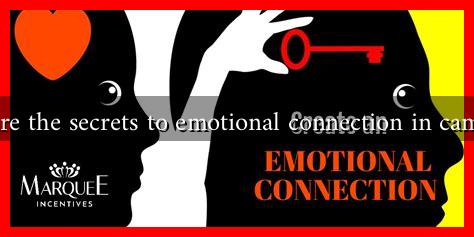-
Table of Contents
What are the Secrets to Emotional Connection in Campaigns?
In an age where consumers are bombarded with advertisements at every turn, creating an emotional connection through marketing campaigns has become more crucial than ever. Brands that successfully forge these connections not only enhance customer loyalty but also drive sales and foster community. This article explores the secrets behind establishing emotional connections in campaigns, supported by examples, case studies, and statistics.
The Power of Storytelling
One of the most effective ways to create an emotional connection is through storytelling. Stories resonate with people on a personal level, allowing them to see themselves in the narrative. When brands share authentic stories, they can evoke emotions such as joy, nostalgia, or empathy.
- Case Study: Nike’s “Dream Crazy” – This campaign featured Colin Kaepernick and highlighted stories of athletes overcoming adversity. The emotional weight of the narrative not only sparked conversations but also solidified Nike’s brand identity as one that champions social justice.
- Example: Coca-Cola’s “Share a Coke” – By personalizing bottles with names, Coca-Cola encouraged consumers to share their stories and experiences, creating a sense of belonging and connection.
Understanding Your Audience
To forge an emotional connection, brands must first understand their audience. This involves researching demographics, preferences, and pain points. By tailoring messages that resonate with specific segments, brands can create campaigns that feel personal and relevant.
- Data-Driven Insights – According to a study by HubSpot, 72% of consumers say they only engage with personalized messaging.
- Empathy Mapping – Brands can use empathy maps to visualize their audience’s feelings, thoughts, and experiences, allowing for more targeted and emotionally resonant campaigns.
Utilizing Visual and Sensory Elements
Visuals play a significant role in evoking emotions. Colors, images, and videos can trigger feelings and memories, making them powerful tools in marketing campaigns. Sensory elements, such as sound and smell, can also enhance emotional connections.
- Color Psychology – Different colors evoke different emotions. For instance, blue is often associated with trust, while red can evoke excitement. Brands like McDonald’s use red and yellow to stimulate appetite and create a sense of urgency.
- Video Content – A study by Wyzowl found that 84% of consumers say they’ve been convinced to buy a product or service by watching a brand’s video. Videos that tell a story or showcase real-life experiences can create a deeper emotional impact.
Building Community and Engagement
Creating a sense of community around a brand can significantly enhance emotional connections. When consumers feel they are part of a larger group, they are more likely to engage with the brand and share their experiences.
- Social Media Engagement – Brands like Ben & Jerry’s actively engage with their audience on social media, responding to comments and sharing user-generated content, which fosters a sense of belonging.
- Brand Activism – Companies that take a stand on social issues, such as Patagonia’s commitment to environmental sustainability, often attract consumers who share similar values, creating a loyal community.
Conclusion
Emotional connection in marketing campaigns is not just a nice-to-have; it is essential for building lasting relationships with consumers. By leveraging storytelling, understanding the audience, utilizing visual elements, and fostering community engagement, brands can create campaigns that resonate deeply with their target market. As the landscape of marketing continues to evolve, those who prioritize emotional connections will stand out in a crowded marketplace, driving both loyalty and sales.
In summary, the secrets to emotional connection in campaigns lie in:
- Effective storytelling that resonates with the audience.
- Deep understanding of consumer demographics and preferences.
- Strategic use of visual and sensory elements.
- Building a community around shared values and experiences.
By implementing these strategies, brands can create meaningful connections that not only enhance customer loyalty but also contribute to long-term success.


